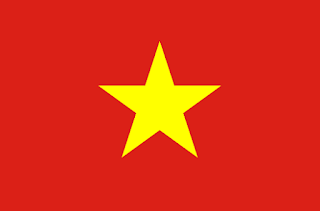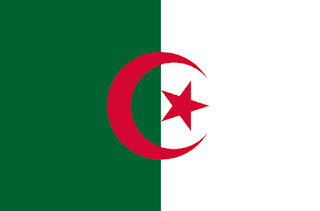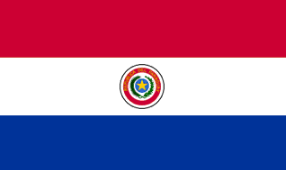FACTS ABOUT VIETNAM
AMAZING
FACTS ABOUT VIETNAM
1.
Hanoi is the capital city of Vietnam.
2.
The total population of Vietnam is 95,261,024.
3.
The natives of Vietnam are called
Vietnamese.
4.
The Dong (VND) is official currency of
Vietnam.
5.
Vietnam shares a border with Gulf of Thailand,
Gulf of Tonkin, China, Laos, Cambodia and South China Sea.
6.
The country’s name was originally
spelled as two words, Viet Nam.
7.
Their culture is a complex adaptation of
Chinese, Japanese, French and American colonial influences.
8.
In 938 AD, the Vietnamese developed a
trade system to exchange animal skins, ivory and tropical goods for Chinese
scrolls on administration, philosophy and literature.
9.
The body of their first president Ho Chi
Minh (Uncle Ho) was embalmed, and is on display in a mausoleum.
10.
Their flag consists of a golden star
with five points to represent farmers, workers, intellectuals, youth, and
soldiers. The red background pays tribute to the bloodshed during the wars.
11.
Traditional Vietnamese culture revolves
around the core values of humanity, community, harmony, and family.
12.
Tet Nguyen Dan (or simply Tet) is the
most important festival in Vietnam. It celebrates rebirth, and is an equivalent
of the Lunar New Year.
13.
They also have a “love market” festival
that is observed to commemorate a tragic forbidden love story, and to give
modern day ex-lovers a chance to meet on neutral territory.
14.
Vietnamese traditional fashion is easily
distinguished by the flowing robes (Ao Dai) and conical hats (Non La).
15.
Their famous Dong Son drums are a relic
of the sophisticated Bronze Age culture between 500 BC and 300 AD.
16.
Water puppetry is another popular art
form that dates back as far as the 11th century.
17.
Construction styles vary from
traditional stilt houses and Chinese style pagodas to colonial French
architecture and thin tube houses.
18.
Hoi An ancient town was a trading port
from the 15th century that has endured up to date.
19.
The My Son Sanctuary is a structural
display of Hindu tower temples developed over ten centuries.
20.
Hue’s royal tombs are a vivid portrayal
of ancient royal art, architecture, and geomancy.
21.
In religious construction, pagodas are
for worship and offerings, while temples are built to honor historical figures.
22.
Thu Phap calligraphy involves “blowing
beauty into every single character.”
23.
Quan Ho folk songs are love duets
between male and female singers considered by UNESCO to be an intangible
cultural heritage of humanity, Geography and Landscape.
24.
Rice terraces are planted that way to
enable the crop to grow along the steep mountainsides.
25.
Fansipan, also known as The Roof of
Indochina is the highest mountain peak in the region.
26.
The Red River in the North and Mekong in
the South are surrounded by extremely fertile plains on which most of the
country’s crops are grown.
27.
Vietnam is also home to the world’s
largest cave, Son Doong.
28.
The Bin Chau Hotsprings are hot enough
to boil eggs.
29.
The Perfume River is so named due to the
scent of the tropical flowers that fall onto the water during autumn.
30.
The Vietnamese believe in Three Kitchen
Gods or Tao Quan, who live with and observe each family’s actions. They depart
at the end of the Lunar Year to report their findings to Ngoc Hoan, The Jade
Emperor.
31.
Their cuisine is well known for its
balance of the five Asian elements; spicy, sour, bitter, salty and sweet.
32.
The principle of yin and yang is also
applied in composing a meal, to provide contrasts in spiciness and temperature
of the food.
33.
Tiet Canh is a traditional Vietnamese dish
made from fresh animal blood.
34.
Vietnam’s street food culture is quite
popular and considered by many to be one of the best in the world.
35.
Noodles or “pho” are the second most
popular food in Vietnam, after boiled rice.
36.
Lizard fishing is one of Vietnam’s most
widespread hobbies.
37.
Elephant rides are another very popular
local activity often enjoyed by tourists.
38.
The Dong Tam snake farm and living
museum was established in 1979 and is responsible for conserving the species
and finding antidotes to their venom.
39.
The tunnels of Cu Chi are a network of
underground pathways that were used as a military base for the Viet Cong
soldiers in their resistance of American forces.
40.
The Forbidden Purple City is a walled
fortress and palace in Hue that was only accessible to the royal family and
their eunuch servants.
41.
The Nine Dynastic Urns symbolize
sovereignty and are each named after an Emperor.
42.
The Hoan Kien turtle is one in only four
known living ones from its species.
43.
Football is the most popular sport in
Vietnam.
44.
Motorbikes are the most common form of
transport, and riders are fined by the authorities if found without a helmet.
45.
Foreigners have the option of applying
for a Temporary Residence Card, which is cheaper and easier to process than a
visa.
46.
Did you know that Vietnam is one of the
biggest producers of cashew nuts in the world?
47.
The country has a literacy level of 94%.
48.
Their rate of unemployment is one of the
lowest of all developing countries in the world.
49.
School children are summoned by traditional
gongs instead of bells.
50.
Nguyen is the most common name in the
country.
51.
Vietnam owns about 20% of the coffee
market share, and is the second largest producer in the world.
52.
To crown it all off, the Ha Long Bay is
of such scenic beauty that it was included as one of the New 7 Wonders of
Nature, as well as a UNESCO World Heritage Site.
53.
The Vietnam War or the Second War of
Indochina was formerly America’s longest war until it was surpassed by the war
in Afghanistan.
54.
It had no clear cause and was started as
a conflict.
55.
It involved the communist government of
North Vietnam in alliance with the Viet Cong against the government of South
Vietnam with support from the Americans.
56.
It lasted from 1954 to 1975.
57.
It continued under the governance of
five different American presidents.
58.
It is broadly considered a mistake by
the Americans, and a tragedy that could have been avoided.
59.
It has been estimated to cost about 200
billion US dollars.
60.
An estimated 2 million civilians and 1.3
million soldiers died during the war.
61.
It is known as the American War in
Vietnam.
62.
The two countries just recently resumed
formal diplomatic relations in 1995.
63.
Vietnam Exports:
clothes, shoes, electronics, seafood, crude oil, rice, coffee, wooden products
and machinery.
64.
Vietnam Imports:
machinery and equipment, petroleum products, steel products, raw materials for
the clothing and shoe industries, electronics, plastics, and automobiles.
65.
The internet country code for Vietnam is
.vn.




Comments
Post a Comment